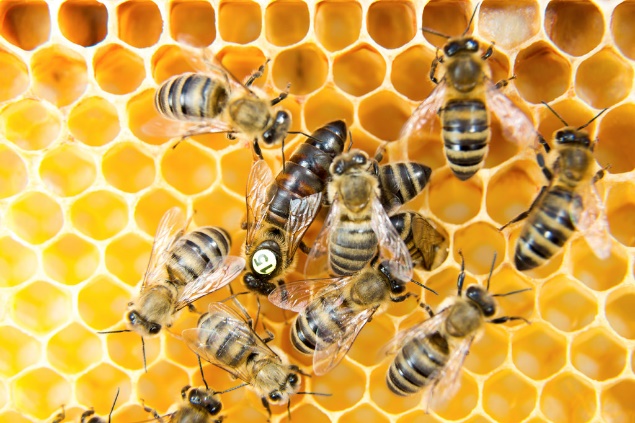Ever wondered why beehives are made of hexagons and not, say, pentagons? Grab a set of pattern blocks and start investigating to see which shapes can be laid next to each other in a pattern that competely fills a space and leaves no gaps. (If you don’t have a set of pattern blocks, here is a set of regular shapes you can copy and cut out.) You should find that regular triangles, squares and hexagons can all be used to do this. A repeating pattern that fills a space is called a ‘tessellation’. Tessellations can be found both in nature and man-made structures.
The next question to be investigated is – why these particular shapes? Examining the values of their internal angles, and the sum of the angles around a point, will help you arrive at an answer.




